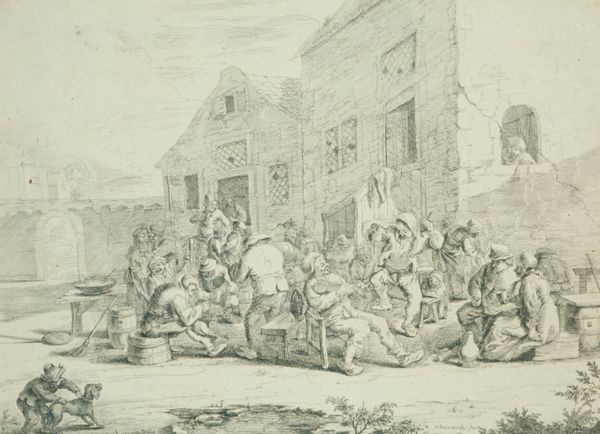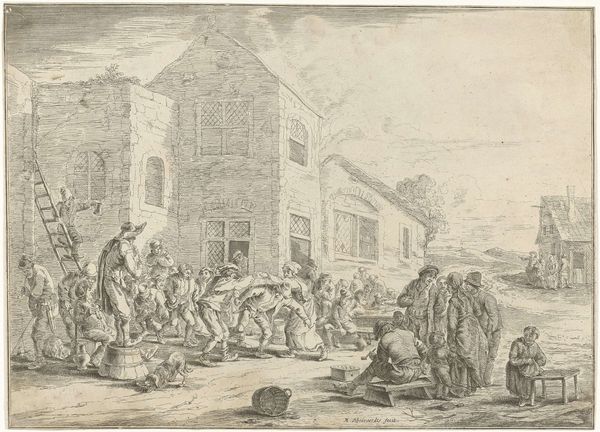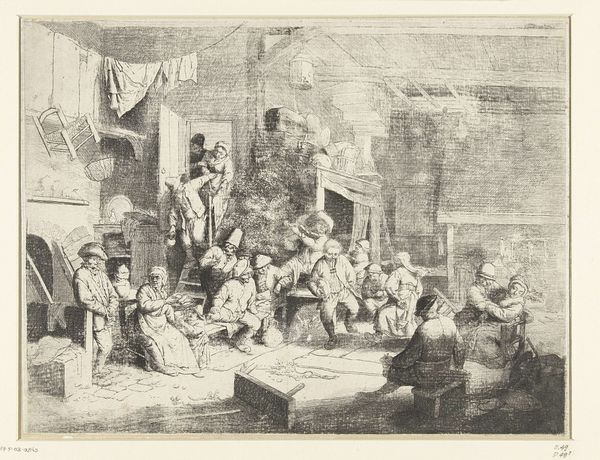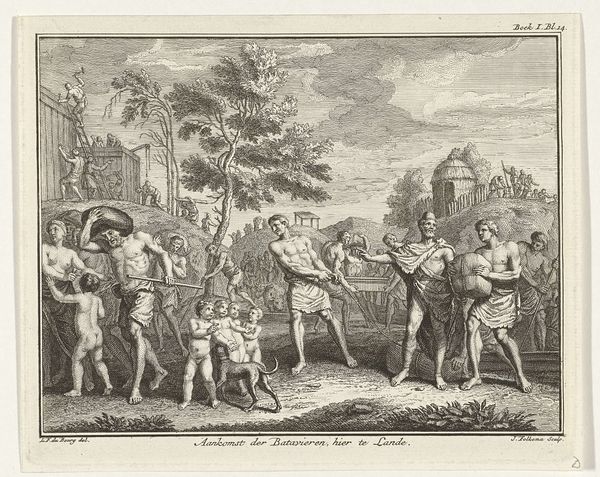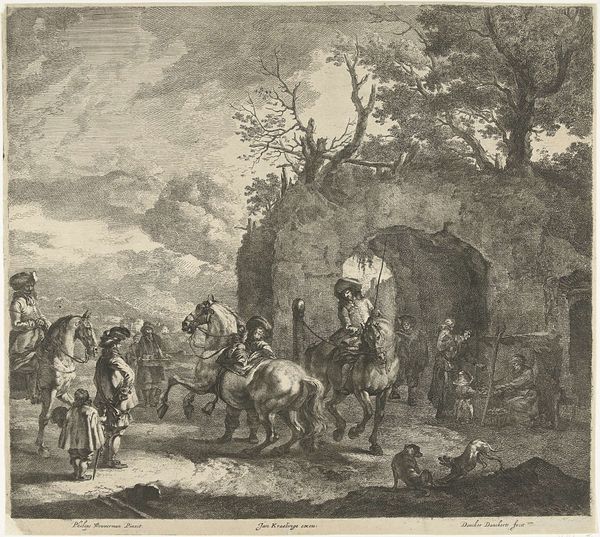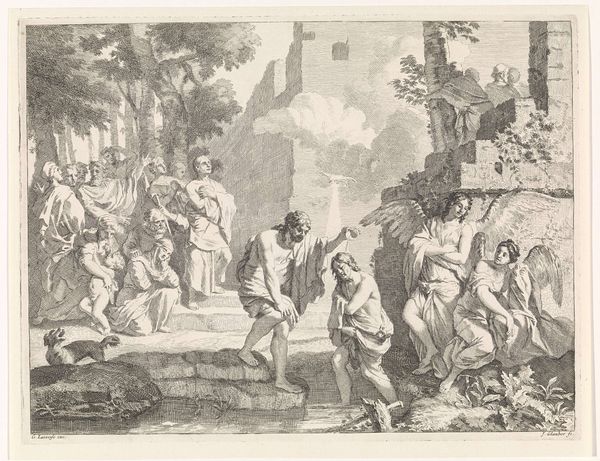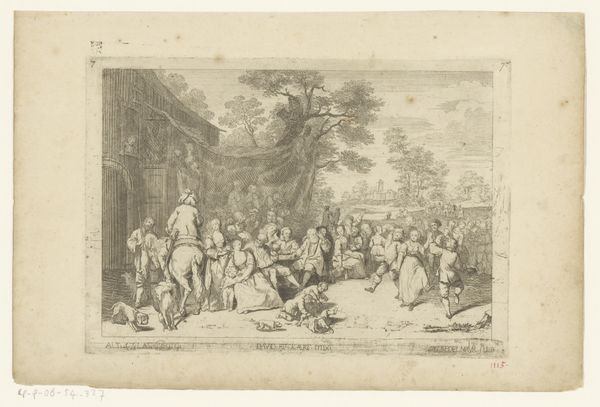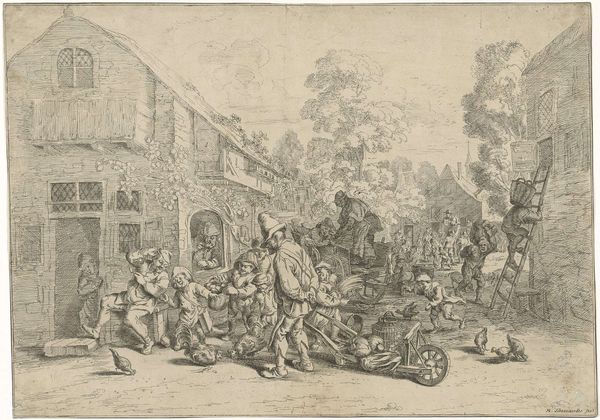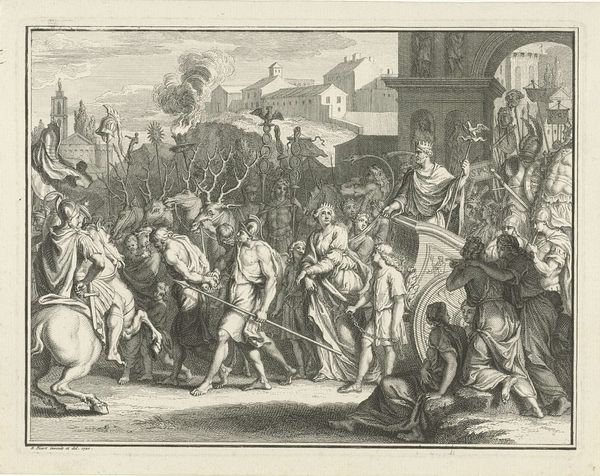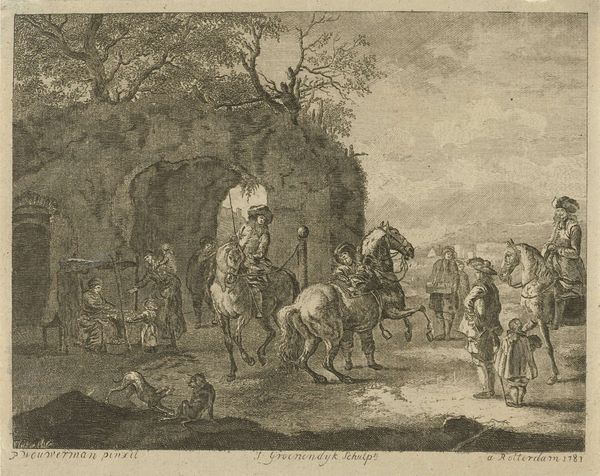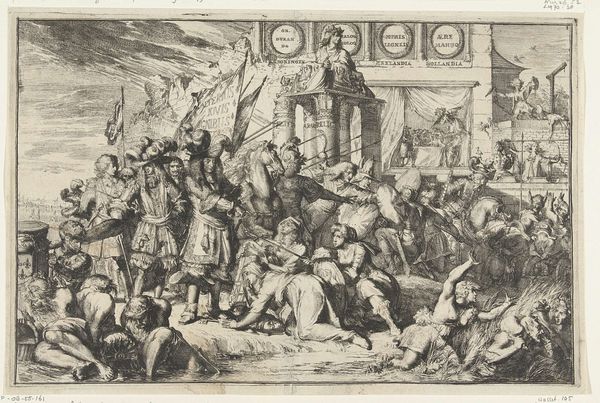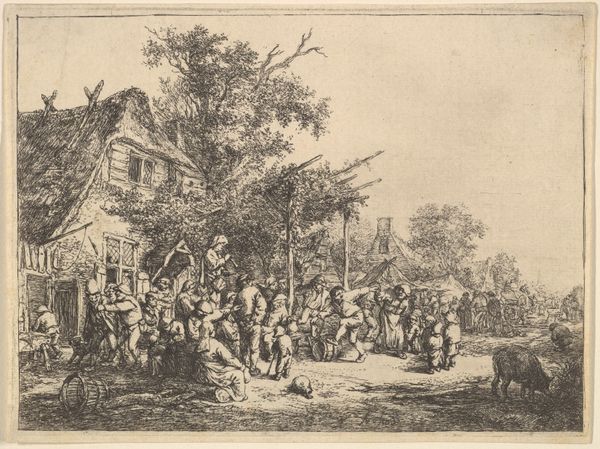
drawing, print, etching, ink
#
drawing
#
baroque
# print
#
etching
#
landscape
#
figuration
#
ink
#
genre-painting
Dimensions: height 282 mm, width 386 mm
Copyright: Rijks Museum: Open Domain
Curator: This etching, created between 1682 and 1702, is entitled *Vioolspeler bij een herberg,* or *Fiddler at an Inn*, attributed to Matthijs Schoevaerdts. What is your first reaction? Editor: My immediate impression is one of dynamic, yet earthly enjoyment. There is a roughness in the mark-making, in the application of ink to the plate that is quite evocative of everyday life as a worker or a craftsman. Curator: Precisely! Note how the artist employs a dense network of lines, creating varied textures that delineate forms. The composition is organized around the titular fiddler, positioned centrally, becoming a clear focal point. Editor: Yes, and look closely: all around him we can identify the processes of making merry – consuming, gaming, socializing, performing, smoking! Consider the social status indicated through these activities. It suggests the materials – the instruments, clothing, the ale itself – were available through the expansion of productive forces to ever-more segments of society. Curator: A sharp observation. One could delve into semiotics of costume in the print, or analyze its deployment of light and shadow that grants this ordinary scene a sense of lively drama. Observe, for example, how the dark areas concentrate the focus on human activities against the simple geometrical volumes of the architecture. Editor: Absolutely. But, for me, there is a strong story about materials present in the rough textures and how they reflect lived experience. There is no sense of glorification, only what the labor provides the possibility to afford. Even, as you notice, with implied “drama." Curator: It seems we converge upon the etching’s raw emotional presence. By observing the structural unity in its visual language, as well as understanding its grounding in human experience, it grants us passage into another age. Editor: And understanding the age in terms of what daily existence afforded and entailed in tangible ways for a large part of the Dutch population in this time. By delving into Schoevaerdts' materials and his rendering thereof, we get closer to how material conditions informed a communal social experience.
Comments
No comments
Be the first to comment and join the conversation on the ultimate creative platform.
